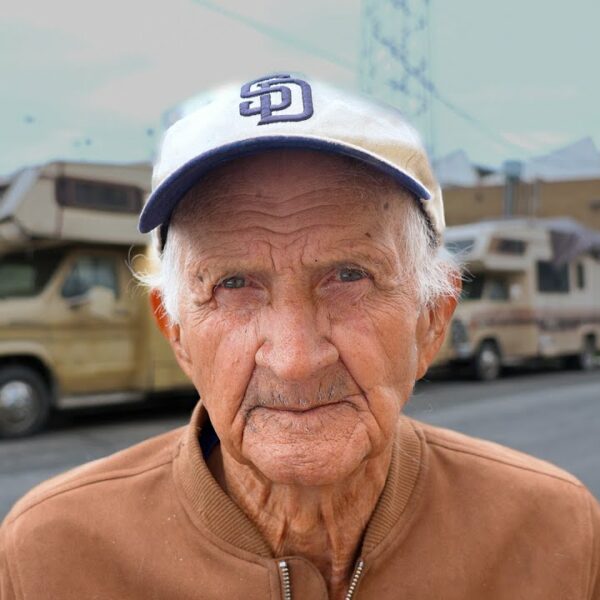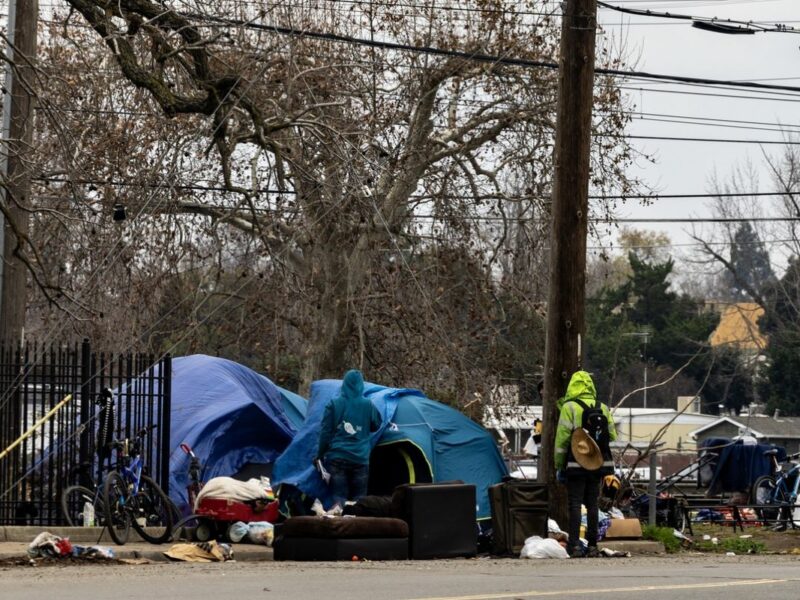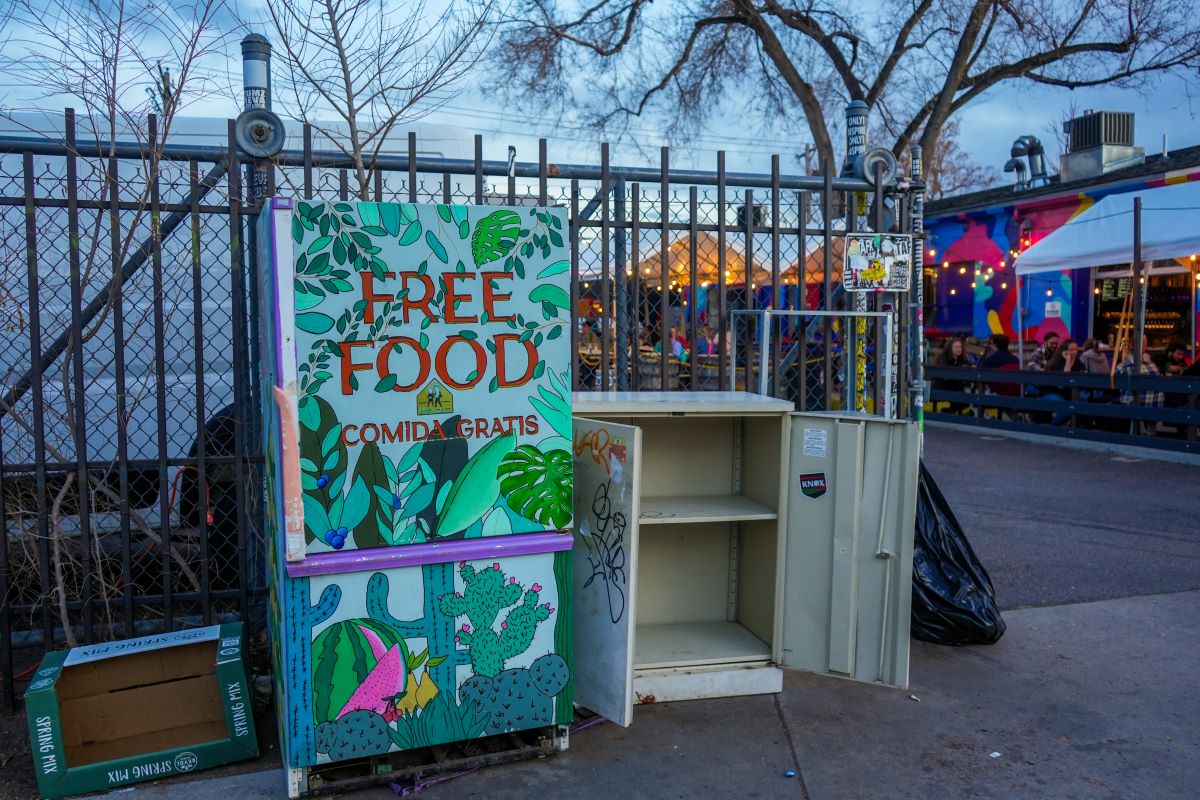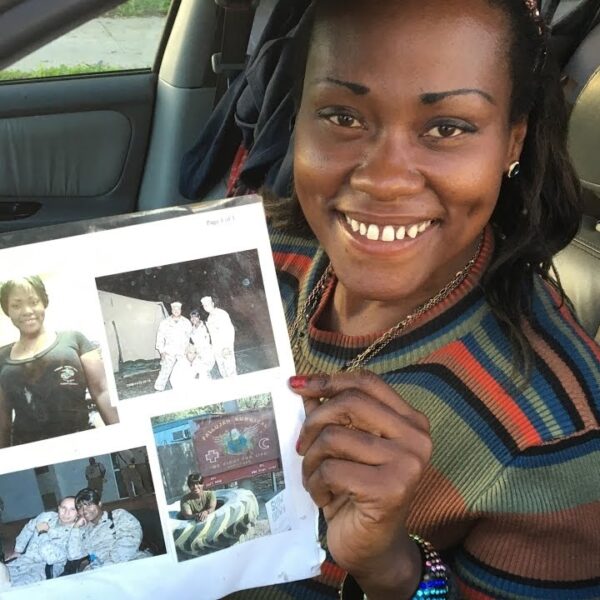But Most of All, Freedges Can Strengthen Community Bonds
Reduced access to fresh, nutritious foods is a problem for many unhoused people, particularly those reliant on lackluster food programs and living without kitchen facilities. Even people who have set up a cooking system may still need access to the refrigeration necessary to keep fresh foods fresh. Without access, they are limited in the foods they can cook if they can’t get to a grocery store before every meal.
Zooming out, all of this indicates a larger, systemic issue with how we distribute our food and general resources at a societal level. But some people have decided to do what they can with what they have in their own communities, and thus the community fridge, aka “freedge” was born.
What Is a Freedge?
A freedge is simply a refrigerator that serves as a place for community members to place food donations and for anyone needing them to come and pick them up for free, no questions asked.
They caught on in America as a way for individuals and groups to bypass all the red tape and bureaucracy that seems eternally uninterested in change. The result is something that has a positive influence on their neighbors’ lives today.
Freedges spread and reached the height of popularity during pandemic lockdowns when all sorts of people from all walks of life faced difficulties getting to the store for groceries.
A big part of what’s made community fridges catch on is their low start-up costs and relative ease of maintenance. Fridges are pretty easy to find for cheap, either sitting unused in someone’s garage or begging to be hauled away on Craigslist or similar. From there, all you need is a power outlet and the support of your neighbors. If all goes well, you can have a stocked freedge up and running in one afternoon.
Is This Actually Helping?
For many community fridge organizers, freedges are a way of coping with feelings of hopelessness at the state of the world and pouring back into their communities through mutual aid. This is part of what made the movement surge in popularity during 2020, when many people felt these feelings at an all-time high.
That’s undoubtedly been of help to many people, but you’re probably wondering whether these fridges offer food to people who would otherwise be going hungry, people who “really” need it. That’s how the current system of jumping through hoops to prove you deserve assistance has primed you to think. But it’s not really how mutual aid works.
No one is monitoring who takes what and why or trying to cut people off if they take “too much.” The freedge is for everyone.
This integration into the community is not only effective but also protective. It’s not a one-way system of charity in which resources flow from the haves to the have-nots. It’s a collaborative system where most people both take and give.
Because everyone in a community can and likely will take from a community fridge, the risk of bad actors donating contaminated food, as we’ve seen people do to unhoused people before, is much reduced. The golden rule of the freedge is, “Don’t put in what you wouldn’t want to take out.” The communal nature of the fridge protects against cruelty people would easily direct at homeless people but wouldn’t think of doing to their more affluent neighbors.
That said, community fridges certainly provide increased access to fresh foods for elderly people, disabled people, low-income people, unhoused people, and anyone living in a food desert where access to these foods is restricted.
Freedges improve access for people who can’t get to the store, can’t afford all the foods they need, or don’t have access to a refrigerator. At the same time, the fridges help local businesses and restaurants offload food that would otherwise go to waste and invest in their community at the same time.
But perhaps the most powerful function of the freedge is the way it serves as a catalyst. It’s a reminder that we can make a difference in each other’s lives if we choose to. It also encourages us to seek more and bigger ways of doing so.
How Can I Get Involved?
Getting involved with your local community fridge can be as simple as dropping off an Instacart shopper’s questionable substitution you’re never going to eat or dropping by to grab a bottle of water while you’re on a walk.
You may have passed by one of these brightly-painted fridges. Or you may need to dig through neighborhood group pages or online directories like freedge.org. If you find one in your area, get in touch to see if they need volunteers or if they have any guidelines for donations.
You may have to do more legwork if you don’t find a freedge in your local area. Try searching around on Instagram or Facebook using the name of your city and “community fridge,” and you may be able to find a fridge that wasn’t listed in a directory. It’s also worthwhile to ask around in local mutual aid groups to see if there’s a nearby freedge or if there used to be one that faced challenges.
If you still find nothing, consider starting your own.
Reach out to other community members to gauge their interest in helping maintain the fridge. Then, look for local businesses that might be willing to either donate to or host the fridge. If you get a lot of strong support, you just might be able to move forward with opening your community’s first freedge!
There are a few guides online that can walk you through opening and maintaining your freedge, though, of course, you’ll want to take your cues from your fellow community members above all.













